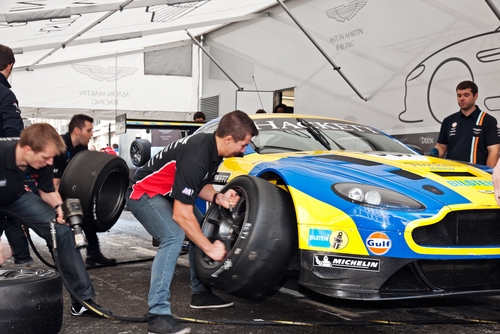I recently read an article about a 5% increase in productivity achieved at Formula Plastics, just by changing their tool clamping system. It got me thinking about mould change methods available in the market, which I then discussed with suppliers.
If you aren’t familiar with SMED, this stands for Single Minute Exchange of Die, and centres around reducing downtime. A good example within our industry would be the regular tool change of an injection moulding machine. We can’t all be lucky enough to have a tool ‘welded in’, the machine being only stopped for purposes of maintenance.
As well as improve machine efficiencies, SMED can also make it practical to supply on a J.I.T. basis, therefore offering the potential to win additional business. Below are some effective and relatively lower cost options for you to consider.
Quick Clamping systems
Easy to use clamping systems such as the ones supplied by PlastikCity Partner company Lenzkes are a good starting point. The clamps come with platen bolts as well as T-nuts, the latter being ideal if your machine has slotted platens. The bolts and T-nuts are supplied according to Euromap standards for the platens fitted to particular sizes of machine.
You can also speed up change over times by trying to standardise backing plate sizes for tools that run in a particular machine size.
There are numerous more expensive quick clamping systems such as Magnetic platens (as supplied by our partner Summit Systems), hydraulic clamps and bayonet clamping (both supplied by Staubli).
Scheduling of tools
Planning of the sequence of jobs you run should also be a major consideration. I’ve seen companies invest in expensive automatic tool changing systems, but then run two alternating tools with polymers that have vastly different processing parameters. Five minutes to change the tool, but a good hour for a material change and to get the barrel to the right temperature.
It isn’t however always practical to plan your tools to run in a particular order, so purging agents should be a consideration, especially as some can also be used to clean a tools runner system. A selection of proprietary brands can be found in the PlastikCity Purging Agent category.
Reducing setting up time for tools
With many companies now operating machines with the ability to store numerous tool settings, a good proportion of tool setting time is often taken up by the ‘piping up’ of waterways.
Hard piping is a cheap and easy solution that saves having to hunt around for the right hoses and fittings. It is also a much tidier solution and prevents miss-connections of hot and cold circuits and the over use of ‘looped circuits’ that can ‘starve’ a tool of sufficiently cool water.
A simple form of hard piping can be achieved quickly and cheaply by using 90-degree hose-tails, flexible hose and tool mounted manifold blocks. The manifolds are typically mounted in colour coded pairs, there being one pair on each half of the tool. If there are water fittings on the underside of a tool, then some small feet can provide clearance.
If large quick release fittings are used to connect to the manifolds once the tool is in situ, water connections can be completed in seconds. You can also pre-heat a tool using a spare water/oil heater.
You can ensure the right connections are made by using different types of connectors, e.g. DME units from water heater to hot tool circuit, Staubli for chiller circuit etc. All the necessary components can be sourced from Mould Shop Consumable specialists.
Having tools stored near a machine, and raw material to hand (preferably already dried if required!) are also key points to consider.
Training
Companies such as Telford based Polymer Training & Innovation Centre offer courses on the principles and application of SMED in Plastics. Here are a few of the comments they made to us based on their experiences of providing this type of support to UK polymer processing companies over many years:
“SMED is a philosophy that can be applied to any situation but lends itself very well to the various polymer processing disciplines. Originally developed in Japan and referred to as the Toyota Total Production System it was brought over to the UK in the mid-’70s by various forward-thinking organisations”.
“The three elements of the philosophy are to identify any waste or non-value-added activities so that these can be eliminated, categorise activities that can only be completed when the machinery has been stopped (Internal) from those activities that can take place while it is still operational (External) and then to streamline those Internal activities so that they take a short a time as possible.”
The cost of this one day course is just £275 per delegate, but if you mention that you found the course through this Blog, you will receive a 10% discount.
In Conclusion
You can invest a lot of time and money in expensive equipment in order to reduce tool change times, but you can also get very good results with a more modest investment.
You should also remember that a single ‘weak link’ in the chain can render your other SMED related practices redundant, it’s no good completing a tool change in 15 minutes if the material isn’t dry!
Thanks to our contributors for their excellent input to this Blog.

